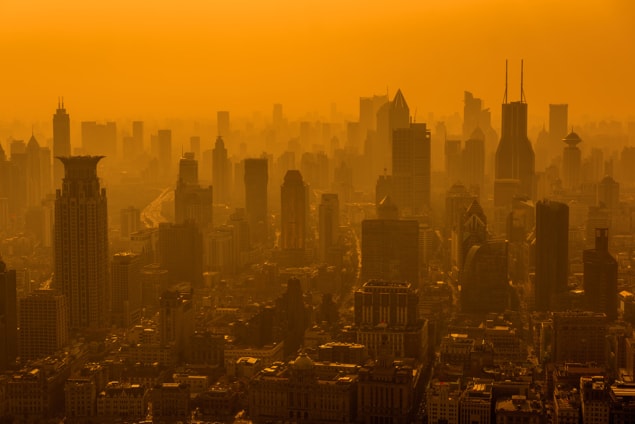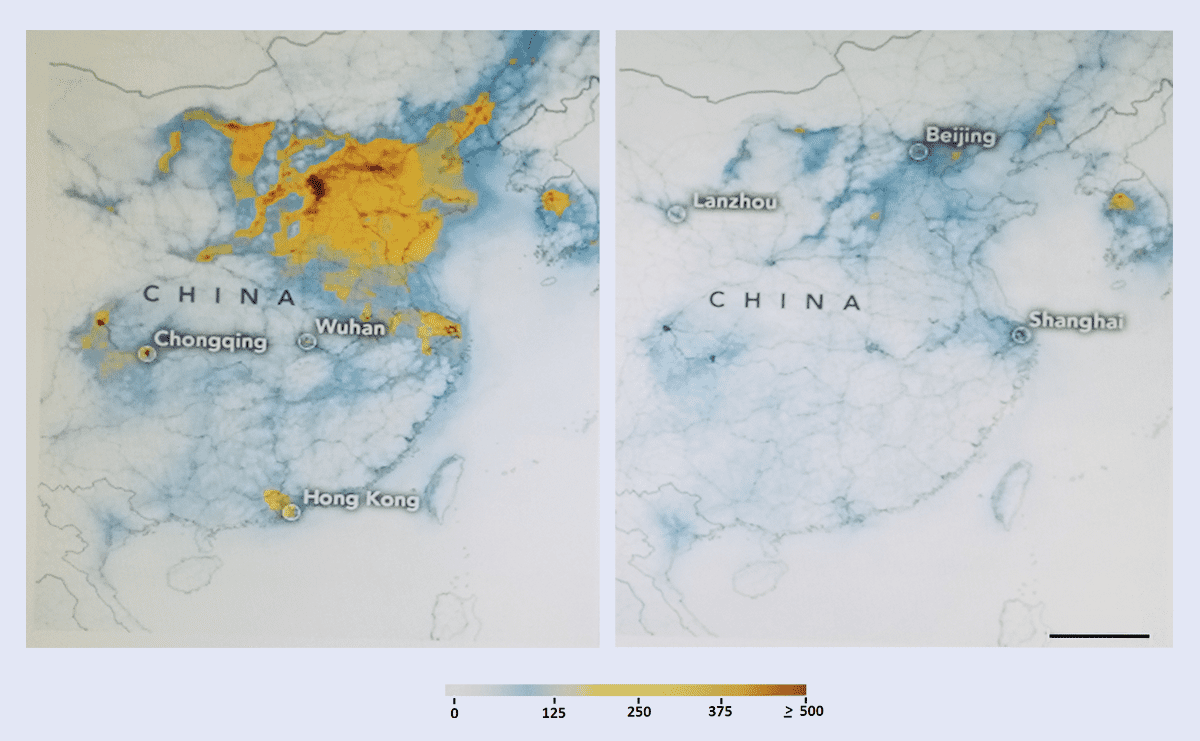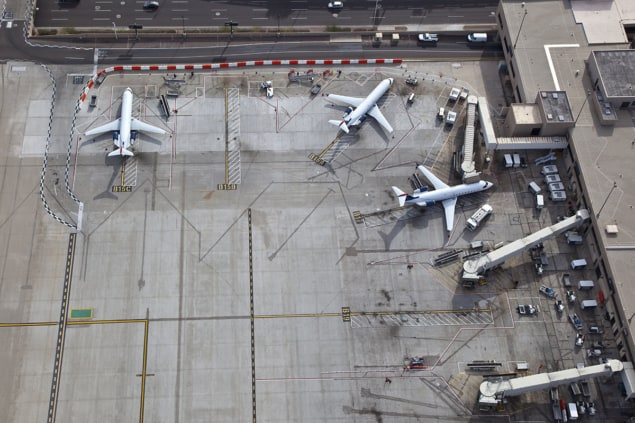The lockdown measures imposed by many nations due to the COVID-19 pandemic have led to air pollution falling dramatically, thereby offering scientists a rare opportunity to study its links with climate and weather. But as Kate Ravilious discovers, it’s a complicated connection

COVID-19 has changed the world. The pandemic has caused devastation, pain and loss, with no corner of the globe untouched. But for some scientists the unprecedented disruption has also brought about a previously unimaginable opportunity. The dramatic fall in air pollution that accompanied countries going into lockdown has provided a unique natural experiment, enabling scientists to probe some of the long-standing mysteries surrounding cloud formation. In doing so, they have gained a better understanding of the complicated interactions between air pollution, weather and climate.
Stringent lockdown measures were first introduced in Wuhan, China – where COVID-19 was initially identified – on 23 January 2020, and quickly rippled out across the rest of the country to combat the spread of the SARS-CoV-2 virus. With public transport shut down, schools, universities and workplaces closed, and people confined to their homes, the streets became silent and air pollution plummeted. Satellite data revealed, for example, that nitrogen dioxide had fallen by as much as 70% (figure 1) across eastern China, with some locations – including Wuhan – seeing drops of up to 93%. And as the virus swept around the world and other countries imposed their own versions of lockdown, the atmosphere responded, with smog being replaced by blue skies in New Delhi, the Himalayan mountain chain becoming visible from parts of northern India for the first time in 30 years, and city skylines being brought into sharp relief in Jakarta, Los Angeles, Paris and beyond.
However, cleaner air doesn’t necessarily result in wall-to-wall blue skies. Just as a small amount of sugar or salt can make a cake taste very different, so small changes in the composition of the atmosphere can trigger a chain reaction of interesting atmospheric effects: concocting new chemicals, making or breaking up clouds, and potentially changing the weather at the surface. But teasing out those changes, against the background of natural climate variability, is difficult.

Keeping a lid on global warming
“The most direct effect of reduced particle pollution on the weather will be on increasing the sunlight that can warm the surface, rather than being absorbed higher up in the atmosphere or reflected back to space,” says Richard Allan, a climate scientist at the University of Reading in the UK. Earlier this year Allan and his colleagues showed that changes in air quality in recent decades have noticeably increased the amount of sunlight reaching the Earth’s surface (Nature Geoscience 13 110). Their analysis of solar radiation measurements from the last 40 years revealed that grimy skies over Europe through the 1980s blocked sunlight and made it dimmer at ground level. But the implementation of air-pollution regulations from the late-1980s had a significant brightening effect across Europe. China has followed a similar path but had to wait until around 2005 for its atmospheric clean-up and the accompanying brighter skies.
Cleaner skies have also been shown to impact atmospheric circulation patterns and extreme weather. Last February Yuan Wang, a climate scientist at the California Institute of Technology in the US, and colleagues demonstrated that the reduction in air pollution across Europe since the 1970s has altered the strength and location of high-altitude winds, shifting the jet stream further to the north during winter (Nature Climate Change 10 225). This movement has lessened the likelihood of extreme cold events over northern Eurasia.
But what about over a shorter time period? What can we learn from the dramatic reduction in air pollution associated with COVID-19 lockdowns? “Large-scale reductions in pollution due to COVID-19 will alter the heating patterns across the globe, particularly in south Asia, Europe and North America, and it is plausible that this will influence weather systems,” says Allan. “But isolating this effect from the chaotic natural fluctuations in weather may be impossible.”
Cleaner air brought more cloud for some
Axel Timmermann, a climate scientist at the IBS Center for Climate Physics in Busan, South Korea, agrees that in most locations the signal will be lost among the climate noise. However, in early February he realized that the massive drop in air pollution accompanying lockdown over eastern China was likely to be large enough to trigger changes that rose above the noise, and since then he and his team have been working flat out to decipher the story that they tell.
“We saw the massive drop in anthropogenic aerosols over eastern China and naively reasoned that fewer cloud-condensation nuclei would result in fewer clouds,” says Timmermann. But his team was in for an interesting surprise.
To tease apart natural climate variability from the impact of lockdown, Timmermann and his team ran 40 simulations on their supercomputer using a model developed by the US National Center for Atmospheric Research. Known as the Community Earth System Model, it is a coupled global climate model – meaning it links the ocean and atmosphere – that can simulate Earth’s past, present and future climate state. Each of the simulations started with atmospheric and oceanic conditions similar to those observed during January 2020 and modelled the following 12 months, with half the models simulating the climate conditions we’d expect in an ordinary year and the other half simulating the climate conditions with the coronavirus lockdown in place. To represent these two scenarios, 20 simulations used average levels of air pollution for February based on the last few years (but not including February 2020), while the other 20 were spiked with a 65% drop in aerosol emissions in February to mimic the impact of lockdown.
To our great surprise the simulations with reduced aerosols produced a significant increase in low cloud coverage and relative humidity over the region
Axel Timmermann
“To our great surprise the simulations with reduced aerosols produced a significant increase in low cloud coverage and relative humidity over the region,” says Timmermann, whose findings are now in review (EarthArXiv 10.31223/osf.io/z5dm8). The lockdown-spiked simulations produced a good match with the actual conditions seen on the ground, which did feature a distinct rise in low cloud cover.
“We still have a lot to learn about how aerosols control clouds, so this was a really exciting result,” says Timmermann. The simulations suggest that the reduction in the number of aerosols resulted in fewer cloud-condensation nuclei. However, this enabled the remaining cloud-condensation nuclei to collect more moisture and form bigger droplets that didn’t evaporate as easily, helping the low clouds to stabilize and be longer-lived. The time of year and prevailing weather conditions will also have played a role, and Timmermann is quick to point out that lockdown conditions at other times of year and under other weather scenarios would likely produce very different results.
Of course it is impossible to say if the low cloud over north-eastern China during February 2020 was actually triggered by the improved air quality, and some scientists are cautious of reading too much into Timmermann’s findings. “It’s an interesting study but we have to be careful because meteorology can be anomalous for reasons other than changes in emissions,” says Nicolas Bellouin, a climate scientist also at the University of Reading, although not part of the same project as Allan in this instance.
Indeed, another study published in June by Wang and colleagues suggests that there may have been more complex interactions at play over some regions of north-eastern China (Science 10.1126/science.abb7431). The team ran atmospheric chemistry and meteorology simulations using air-pollution data from eastern China gathered between 23 January and 13 February this year – the most stringent period of lockdown in China. “We intuitively expected that the reduction in nitrogen dioxide and sulphur dioxide would result in fewer aerosols and therefore less haze,” says Wang.
Observations from the megacities of Shanghai, Wuhan and Guangzhou appear to support this intuition. But to Wang and his colleagues’ surprise, the northern portion of their study area showed the exact opposite, with Beijing and surrounds experiencing severe choking haze. In Beijing itself, the concentration of fine dust particles (particulate matter with a diameter less than 2.5 μm, known as PM2.5) reached up to 200 μg/m3 – nearly 20% more than normal for this time of year and way above the World Health Organization’s guideline daily value of 25 μg/m3.
When Wang and his colleagues modelled the chemistry and meteorology, they found that the reduction in traffic and emissions from factories during lockdown did not actually alleviate air pollution in Beijing and its surrounding area. In this case, the high humidity and reduction in nitrogen oxides actually promoted the formation of another pollutant created by a secondary chemical reaction: ground-level ozone. That’s because under ordinary conditions, nitrogen oxide helps to keep a lid on ozone levels by reacting with it and breaking it down into nitrogen dioxide and oxygen. But with less nitrogen oxide around, ground-level ozone was able to persist for longer than usual, resulting in concentrations increasing by over one third in Wuhan for example (Science of the Total Environment 735 139542). (In less industrialized areas the effect is muted because the fall in nitrogen oxides is not as great.) Helping to speed this reaction along even faster were the volatile organic compounds that continued to spew out unabated from petrochemical facilities and oil refineries. “These secondary reactions have been discussed previously, but the new findings show that the reactions are more efficient than we’d previously realized,” says Wang. “We think that Timmermann and his colleagues’ proposed cloud-formation mechanism is a plausible feedback process, but in this case we don’t think it was the main driver of the ground-level haze.”
In recent years cities like Beijing have been using short-term emissions controls such as alternate-day driving rules and factory closures to prevent the formation of severe haze. This appeared to be effective during the Olympic games in summer 2008, and for the Asia-Pacific Economic Cooperation in November 2014. But the new research suggests that these air-quality success stories in Beijing may be more down to good luck with the weather conditions at the time. “In both cases the near-surface humidity was not as high as it was during lockdown this year,” says Wang. Ironically, only cutting traffic could actually make things worse. “Our model simulations show that all sources of air pollution must be considered and that reducing volatile organic compounds is important too, because this helps to limit the secondary chemical reactions,” he continues.
Empty skies

Nicolas Bellouin at the University of Reading, UK, thinks that it might be possible to detect a change in cloud cover by focusing on a very specific aspect of lockdown: the extreme disruption to air traffic. “Because air traffic follows well defined corridors, particularly between Europe and the US, and the US and Asia, we can look for changes in cloud properties along these corridors,” he says.
Aviation impacts the composition of the atmosphere via the trails of condensed water they leave behind them (contrails) and the particulates emitted from jet engines. “We’re not really sure how effective those soot particles are at nucleating ice,” says Bellouin, “but our hypothesis is that with fewer particulates being emitted there will be fewer cloud-condensation nuclei and we’d expect to see fewer or thinner cirrus clouds.” Together with colleagues, Bellouin is gathering satellite data with the aim of comparing busy air traffic routes during lockdown with their equivalent from the past. “In order to try and rule out changes due to anomalous weather conditions we search for days from the past that have similar meteorology to the lockdown days,” explains Bellouin. “This is a time-consuming and complex process.” The team hopes to have some results later in the year.
Did lockdown alter India’s monsoon?
So what about elsewhere in the world? What happened as Europe, the US, India, Australia and South America entered lockdown and saw their air pollution plunge? Despite the hyperbole in the media, the drop in air pollution in other parts of the world wasn’t anywhere near as large as that seen in eastern China. For example, instead of the 70% drop in nitrogen dioxide levels observed there, satellite measurements show these fell by only 20–38% over western Europe and the US compared with the same time in 2019. It’s an impressive drop, but probably not big enough to have a measurable effect on the weather or climate.

Still, that doesn’t mean it isn’t worth looking into. Towards the end of March India entered strict lockdown, with everything except essential services shut and 1.3 billion people told to stay home for 21 days. As factories closed and animals reclaimed the streets, some areas showed hefty drops in air pollution, which if sustained for long enough might just influence climate. Research under review (Atmos. Chem. Phys. Discuss. 10.5194/acp-2019-1188, in review), carried out by climate scientist Laura Wilcox from the University of Reading and colleagues (not including Allan and Bellouin in this instance), indicates that reductions in Asian air pollution sustained over a number of years would result in more intense tropical monsoon rains. That’s because a thinner layer of haze over India would reflect less heat back into space. This would cause temperatures over land to rise, increasing the contrast in temperature between oceans and land, and driving a faster and more intense water cycle.
The drop in air pollution associated with lockdown is likely to be more fleeting in nature, but there is still a small chance that it may influence climate over the country. “I’ve been watching India closely,” says Wilcox. “We would typically expect to see summer monsoon onset during June, and would usually see both very hot temperatures and high aerosol levels ahead of it.” In 2020 it is thought the drop in air pollution over northern India may help to drive a more intense monsoon. Wilcox and her colleagues are busy gathering and analysing measurements, and comparing them with previous years to determine if this is the case. Initial indications suggest that the monsoon is weaker than average this year, but with some unusually intense convection events, bringing very heavy rains in July and severe floods to north-east India, Bangladesh, Bhutan, Myanmar and Nepal, killing hundreds of people and displacing as many as 4 million from their homes. But it will take some time to work out whether the intense rains were linked to the drop in air pollution, or were simply a random quirk of the climate this year.
Cutting air pollution ain’t simple
As well as understanding the impact that air pollution has on climate, atmospheric chemists have been using lockdown as an opportunity to better understand the sources of air pollution and the distances that pollution can travel. In Europe, where lockdowns saw air-pollution patterns echo those observed in China, there were significant drops in nitrogen dioxide, but disappointingly small reductions (or even increases) in particulate pollution. “There has been quite a bit learnt about PM2.5 [small particulate pollution], reinforcing that much of it is secondary in nature, and that simply reducing transport volumes doesn’t have a huge impact on particulates,” says Alastair Lewis, an atmospheric chemist at the UK’s National Centre for Atmospheric Science. “The assumption is that the key contributing sources to secondary particulates, like ammonia from agriculture and volatile organic compounds from solvents, will have been emitted largely as normal,” he adds.
If the changes associated with the COVID-19 pandemic lockdown have taught us anything it is how very complex the reactions that occur in Earth’s atmosphere are, and how intimately meteorology and atmospheric chemistry are linked. It’s clear that reducing air pollution can have unintended negative consequences, including changed weather patterns and a surge in secondary pollutants. For cities wanting to keep a lid on localized air pollution, and prevent dangerous short-term spikes, the lockdown findings demonstrate that quick fixes aren’t always possible. Instead, the best way of tackling air pollution in cities is to reduce pollution from all the different sources, but even this seemingly benign action could bring its own problems.
Earlier this year Wilcox and her colleagues published research showing that rapid cuts in air pollution are likely to accelerate climate change in the future (Environ. Res. Lett. 15 034013). In the most extreme scenarios with rapid increases in air quality, their results suggest the hottest day of the year may be up to 4 °C hotter by 2050, with around one third of that increase due to cleaner skies.
Nonetheless, the cost of failing to cut air pollution is far higher. “Continuing to emit greenhouse gases into the atmosphere at the current rate will drive far larger and more sustained temperature rises,” explains Allan. “That, along with changes in the global water cycle, will cause serious impacts for our societies and the ecosystems upon which we depend.”



